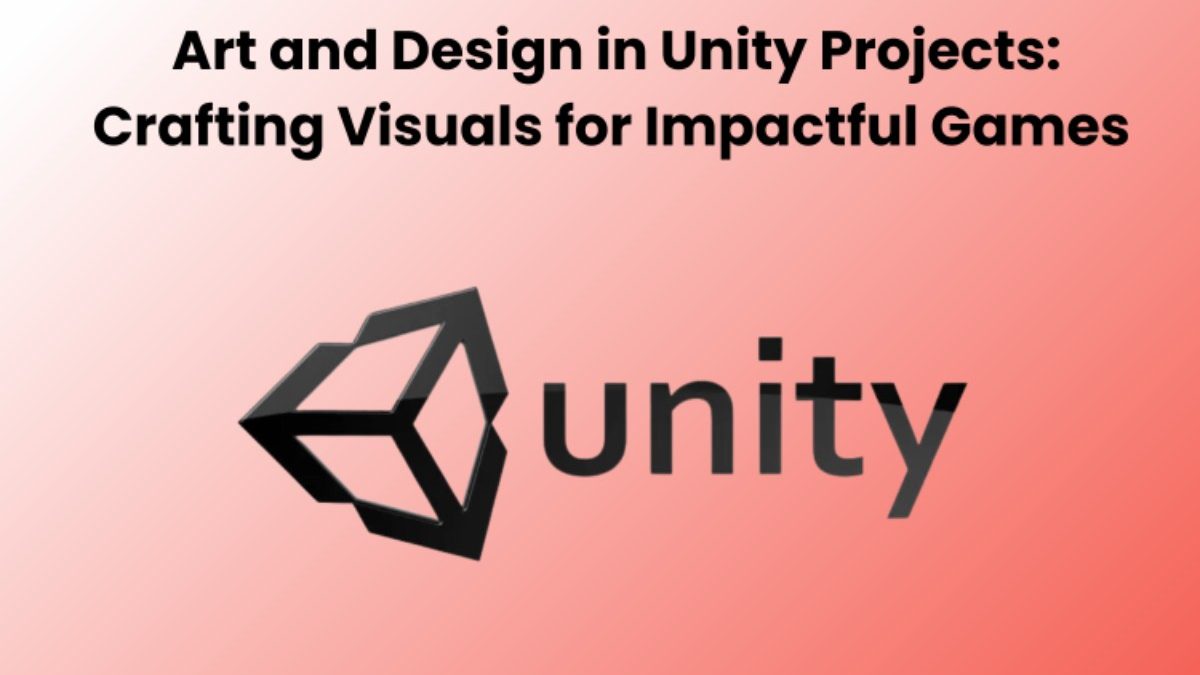Unity, a cross-platform gaming engine developed by Unity Technologies is used to make interactive experiences like simulations and games, both 2D and 3D. Unity is well-known in the game development industry for its adaptability, simplicity of use, and broad usage. This blog discusses the value of art and design in Unity projects and explains how these components help create games that are both aesthetically pleasing and powerful. Unlocking the full potential of your game requires a grasp of the symbiotic link between art and design in Unity Project, regardless of experience level or interest in taking a Game Development Course.
Table of Contents
The Visual Power of Unity
Unity is a versatile and flexible game production engine that has grown to be indispensable for creators all around the world. It is now the go-to platform for creating aesthetically stunning and immersive gaming experiences because of its ability to effortlessly incorporate art assets and design aspects. Unity’s appeal is not limited to its technical prowess; it is also highly approachable, which means it is suitable for novices and seasoned users.
Art: Bringing Worlds to Life
Art is what paints the universe of a game on the canvas in the realm of Unity projects. Every visual element, from outdoor settings to character design, adds to the overall style and story. The virtual environments are brought to life with excellent textures, engrossing animations, and precise detailing, which captivates players both visually and emotionally.
It is crucial to become an expert in asset generation if you are thinking about taking a course in game development. With the many tools Unity offers, artists can easily import and work with both 2D and 3D files. Unity makes the process of integrating tools like Photoshop texture design or Blender character sculpting easier and guarantees that your creative vision is accurately reflected in the game world.
Design: Blueprint for User Experience
Design creates the framework for user interaction and experience, whereas art draws the viewer’s attention. Unity’s user-friendly design tools enable developers to make interfaces that improve gameplay and smoothly lead users through the story. Design encompasses user interfaces, level layouts, and interactive components, all of which improve the gaming experience when done well.
Students take a Unity-focused game development course where they are taught the value of user-centric design. Key elements that have a direct impact on player involvement include button placement, level flow, and general UI design. With the help of Unity’s UI/UX tools, developers can streamline the process and iterate and improve their ideas until they achieve the ideal harmony between utility and aesthetics.
The Unity Advantage in Game Development Courses
Because Unity is so widely used in the game business, it’s a great resource for anyone taking a course on game creation. The thorough documentation and intuitive interface of the engine offer a strong starting point for understanding the nuances of game creation and art integration. Along with gaining technical proficiency, students also learn about the collaborative nature of game creation, which involves designers and artists working together to realise a common vision.
Unity projects provide a realistic representation of the dynamics of collaboration found in the gaming industry. As they work through the difficulties of combining disparate creative visions to create a seamless and captivating gaming experience, students gain expertise in compromise and communication. Aspiring developers benefit greatly from this hands-on experience, which helps them prepare for the collaborative nature of professional game creation.
Case Studies: Unity Projects that Set the Bar High
To comprehend the significance of art and design in Unity projects, let’s examine a few notable instances that have raised the standard in the gaming sector. The smooth blending of art and design is evident in games like Monument Valley, Hollow Knight, Ori, and the Blind Forest, which provide players with visually arresting and profound experiences. These titles show off Unity’s technical strength and the countless creative possibilities that arise from the seamless fusion of art and design.
Conclusion
Unity projects are living examples of how well art and design can coexist in the dynamic field of game development. Aspiring developers can use Unity’s capabilities to realise their creative ambitions, whether they’re taking a course in game production or going it alone. Developers may create visually appealing and memorable games that linger in the minds of players by mastering the subtleties of art and design integration within Unity. Therefore, keep in mind that the combination of art and design in Unity is the key to realising the full potential of your game, regardless of whether you’re sculpting characters, creating interfaces, or writing complex gameplay systems.

